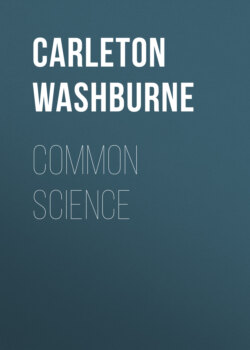Читать книгу Common Science - Carleton Washburne - Страница 13
На сайте Литреса книга снята с продажи.
Fig. 9. A glass model suction pump.
ОглавлениеTable of Contents
If you had a straw over 33 feet long, and if some one held a glass of lemonade for you down near the sidewalk while you leaned over from the roof of a three-story building with your long straw, you could not possibly drink the lemonade. The air pressure would not be great enough to lift it so high, no matter how hard you sucked—that is, no matter how perfect a vacuum you made in the upper part of the straw. The lemonade would rise part way, and then your straw would be flattened by the pressure outside.
Some days the air can force water up farther in a tube than it can on other days. If it can force the water up 33 feet today, it will perhaps be able to force it up only 30 feet immediately before a storm. And if it forces water up 33 feet at sea level, it may force it up only 15 or 20 feet on a high mountain, for on a mountain there is much less air above to make pressure. The pressure of the air is different in different places; where the air is heavy and pressing hard, we say the pressure is high; where the air is light and not pressing so hard, we call the pressure low. A place where the air is heavy is called an area of high pressure; where it is light, an area of low pressure. (See Section 44.)
What makes winds? It is because the air does not press equally all the time and everywhere that we have winds. Naturally, if the air is pressing harder in one place than in another, the lower air will be pushed sidewise in the areas of high pressure and will rush to the areas where there is less pressure. And air rushing from one place to another is called wind.
